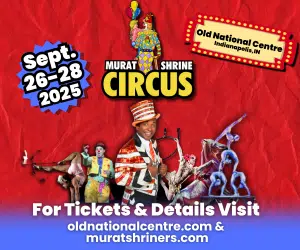One of the most important things visitors to any museum or attraction can do is to prepare for a visit ahead of time by looking at the website to discover what resources the museum offers to assist in planning.
“Things are always changing at The Indianapolis Children’s Museum, thanks in part to what we learn from our visitors,” says Betsy Lynn, accessibility coordinator at The Children’s Museum of Indianapolis. “We appreciate feedback on what we can do to make the museum even more accessible and inclusive and how we can help visitors prepare for what they will experience.”
The Concierge Desk on Level 1 of the museum is a great first stop. There, visitors can find sensory maps, fidget items and noise-reducing headphones. The Concierge can also provide information about museum programs and events that may be well-suited for visitors.
The Children’s Museum offers sensory maps with symbols to help guide families through a visit. The symbols designate things such as bright areas like Beyond Spaceship Earth, which is a visually busy space. It features several bright colors and the pattern on the floor is made to simulate a wall of the space station.
The sensory map also prepares families for low-lit areas, such as Dinosphere, and flashing lights, such as in the National Geographic Treasures of the Earth tomb area during the sound and light show.
There are quiet areas (infoZone library) and loud spaces (All Aboard with a loud bell on the train and strobe light during the show). 
Tactile opportunities can be enjoyed with plastic replicas of the Chihuly glass pieces to create a tower in Fireworks of Glass or wooden blocks in Playscape.
Strong smell areas include the Food Court and some performances in Lilly Theater, which include a fog machine where fog may drift into the first few rows of the audience.
For children who enjoy movement and are kinesthetic learners, Riley Children’s Health Sports Legends Experience is a great place to move body parts in different ways. There is an increasing amount of adaptive equipment outdoors in the sports area, including sport wheelchairs with seat belts to lock the rider in place that also feature wheels that are slightly angled at the base to provide more stability. There are also balls with bells inside for those with low vision and paddles on a frame that visitors using wheelchairs can manipulate to simulate kicking a soccer ball.
The museum continually tests different practices and devices to determine what families might find useful. “We want to know if there are parts of an experience that are going to be difficult for people with low vision, language barriers, different physical abilities or sensory needs,” says Jason Greene, manager of Riley Children’s Health Sports Legends Experience. “If someone has challenges with loud noises, lights, flashing — anything that’s overwhelming, we want to know. We’re always looking for ways that we can adjust things to help visitors feel more comfortable.”
Find out more here: https://www.childrensmuseum.org/visit/accessibility






